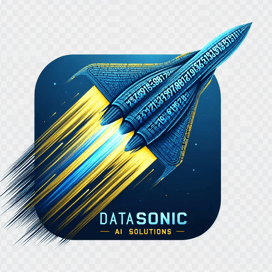Ensuring Ethical AI: An Exploration of NVIDIA's NeMo Guardrails
Tolga Tuncoglu
12/21/20233 min read


In the rapidly evolving landscape of artificial intelligence (AI), NVIDIA’s NeMo Guardrails stands as a testament to the commitment towards ethical AI. This advanced toolkit is designed to ensure the safe, secure, and trustworthy deployment of Large Language Models (LLMs) like ChatGPT. This comprehensive exploration aims to unpack the intricacies of NeMo Guardrails, from its conceptual framework to its Python API and LangChain integration, enriched with illustrative code examples.
Understanding NeMo Guardrails: A Conceptual Overview
At its core, NeMo Guardrails is an open-source toolkit developed by NVIDIA, tailored to develop conversational AI systems that are not just intelligent but also ethically aligned. In an age where AI's capabilities are growing exponentially, ensuring these systems operate within ethical boundaries is paramount. NeMo Guardrails steps in as a solution, offering a framework where developers can set programmable rules to guide AI interactions within their applications.
Why Guardrails?
The analogy of guardrails is aptly chosen. Just as physical guardrails on roads prevent vehicles from veering off course, NeMo Guardrails ensures AI conversations don't stray into unsafe or unethical territories. These programmable constraints act as ethical boundaries, monitoring and dictating user interactions to keep the AI within the desired domain of operation.
The Architecture of NeMo Guardrails
Based on information from the first GitHub source, the architecture of NeMo Guardrails is multi-faceted, encompassing several types of rails that work in tandem to maintain the integrity of AI conversations.
Input Rails: These rails process user input, with capabilities to either reject or alter it. For instance, they can mask sensitive data or rephrase queries to align better with the system's ethical guidelines.
Dialog Rails: Influencing the dialogue's trajectory, dialog rails manage how the LLM is prompted. They work on canonical form messages, determining the conversation flow and ensuring it aligns with predetermined standards.
Retrieval Rails: In scenarios involving information retrieval, these rails play a crucial role in modifying or rejecting data chunks, thereby maintaining the conversation’s integrity and relevance.
Execution Rails: These oversee the input/output of custom actions or tools called within the conversation, ensuring that every executed action adheres to the set ethical standards.
Output Rails: Applied to the LLM's output, output rails ensure the final response aligns with ethical guidelines. They have the authority to reject or modify outputs that don't meet the set criteria.
Python API and LangChain Integration: Bringing Flexibility and Power
The second and third GitHub sources offer a deeper insight into the toolkit's Python API and its integration with LangChain, highlighting NeMo Guardrails' flexibility and power.
Python API Integration:
The toolkit’s Python API enables developers to seamlessly integrate guardrails into their projects. Using the RailsConfig object and the LLMRails instance, developers can apply the configured guardrails in a structured and controlled manner. The LLMRails.generate(...) method is pivotal in this process, generating LLM responses that are both contextually relevant and ethically aligned.
An illustrative example of basic usage is as follows:
from nemoguardrails import LLMRails, RailsConfig config = RailsConfig.from_path("path/to/config") app = LLMRails(config) new_message = app.generate(messages=[{ "role": "user", "content": "Hello! What can you do for me?" }])
This simple yet powerful framework offers immense flexibility, allowing developers to tailor the AI's conversational capabilities to specific ethical guidelines and user interaction models.
LangChain Integration:
The integration of NeMo Guardrails with LangChain further amplifies its potential. LangChain, a tool for building chains of reasoning in LLMs, when combined with NeMo Guardrails, enables a more robust and controlled conversational experience.
For instance, existing LangChain chains can be registered as actions within the NeMo Guardrails framework, allowing for more nuanced and controlled AI responses. This integration is instrumental in leveraging pre-built tools and custom actions within conversational models, thus enhancing the AI's capability while ensuring it remains within ethical boundaries.
A code example demonstrating this integration:
app.register_action(constitutional_chain, name="check_if_constitutional") define flow user ... bot respond $updated_msg = execute check_if_constitutional
In this example, a constitutional chain is registered and then utilized in a flow, illustrating the seamless blend of ethical guardrails and sophisticated AI reasoning.
NVIDIA’s NeMo Guardrails represents a major stride forward in the journey towards ethical AI. Providing a comprehensive framework for AI conversations addresses the crucial need for safety, security, and trustworthiness in AI interactions. Whether through its diverse rail categories, Python API, or LangChain integration, NeMo Guardrails is not just a toolkit; it’s a paradigm shift in how we approach responsible AI development and usage. As we continue to integrate AI into various aspects of our lives, tools like NeMo Guardrails will play a pivotal role in ensuring that these integrations
